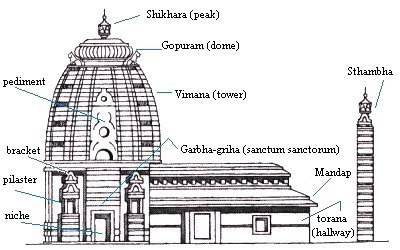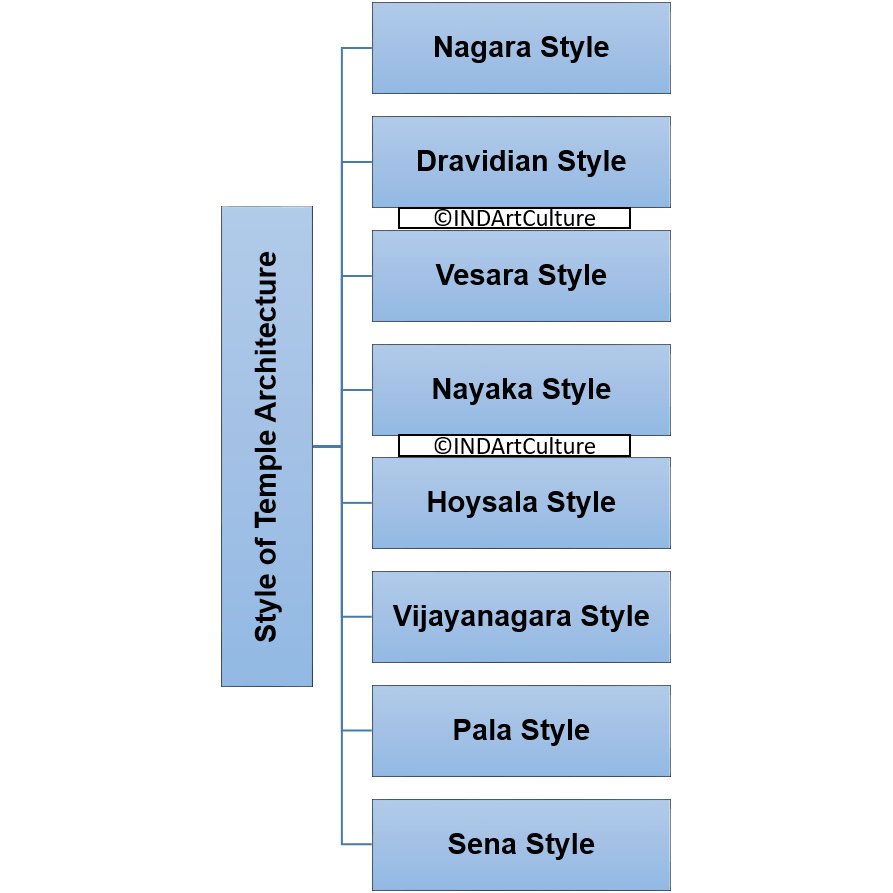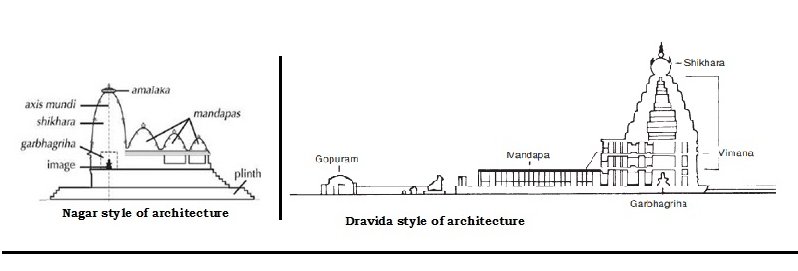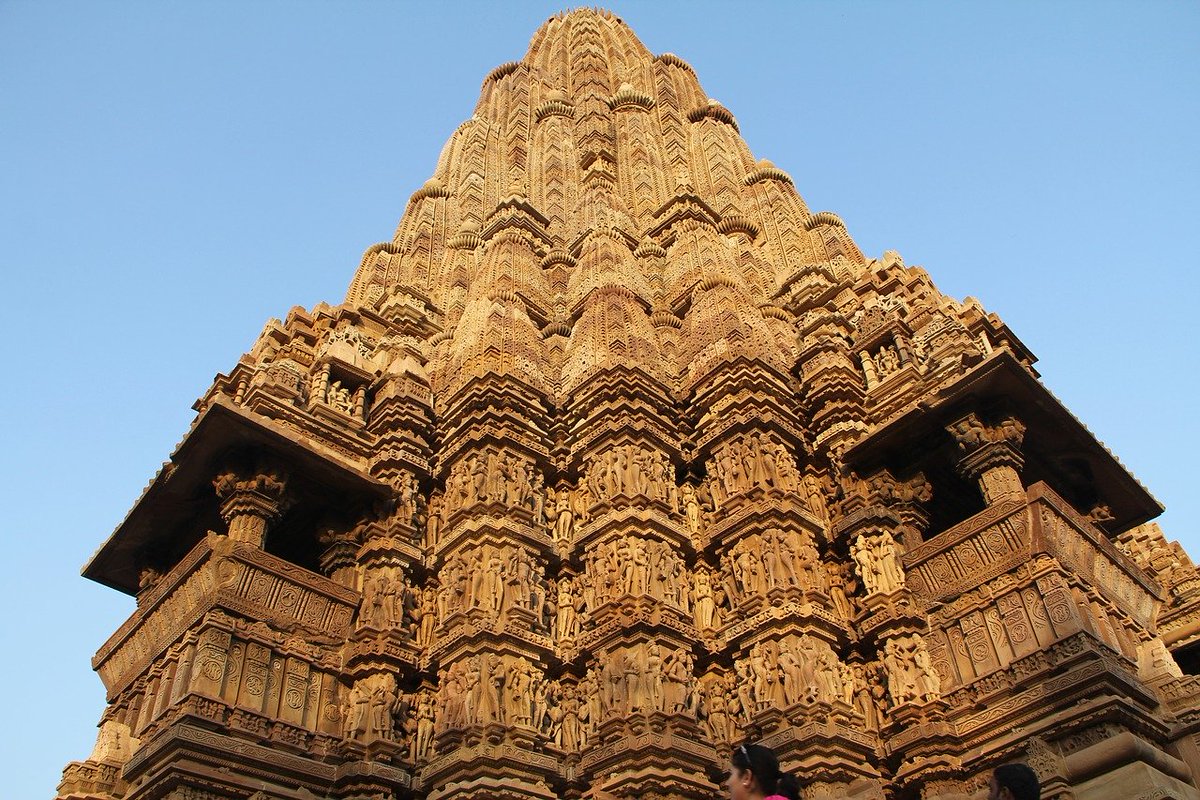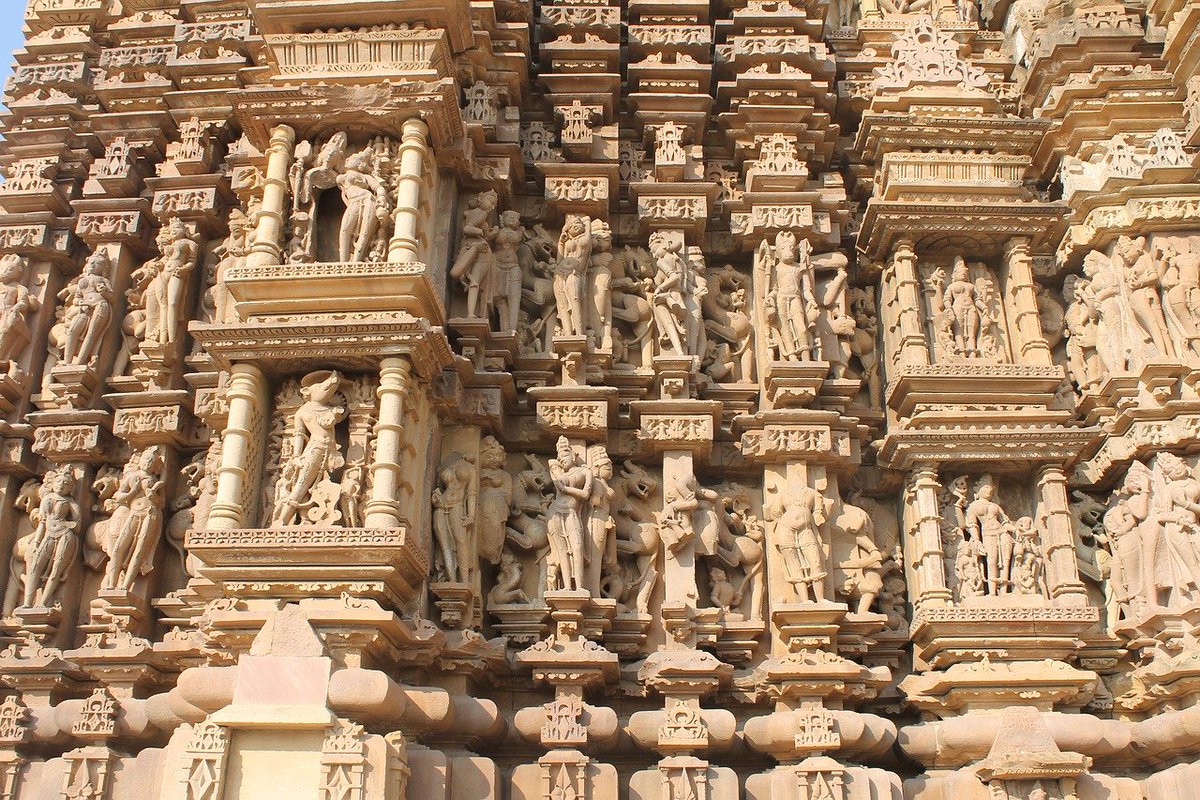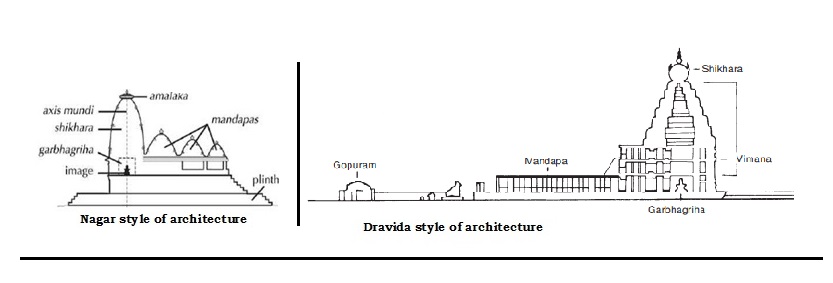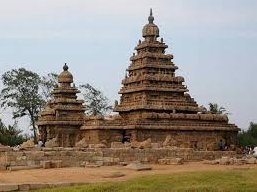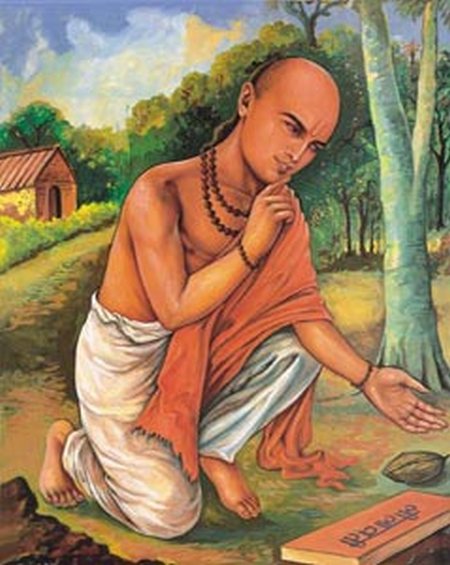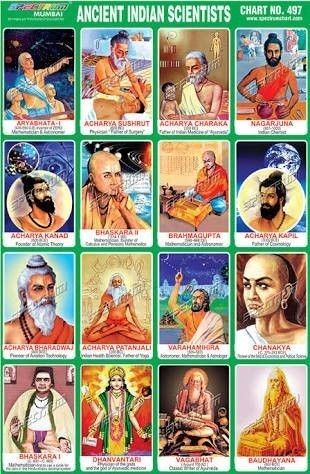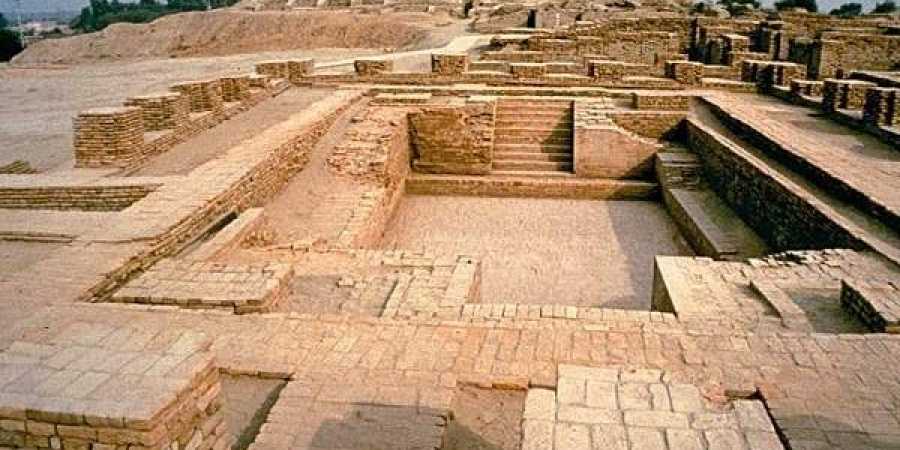- Rekhaprashada/Latina - square at the base and whose walls curve/slope inward
- Phamsana – broader base, shorter than latina, slope upwards on a st. line
- Valabhi – rectangular base, rectangular buildings with a roof that rises into a vaulted chamber.
A) Odisha School
B) Solanki School
C) Khajoraho School
- Kalinga empire
- Exterior walls- excessively decorated
- Interior walls – Plain
- No use of pillars
- Shikhara – Rekhadeuls
- Mandap – Jagmohan
- Temples surrounded by boundary walls
- Spread over GJ, RJ – by Solanki rulers
- Temple walls devoid of carving
- Garbhagriha connected with mandapa
- Decorative gateways- toranas
- Presence of step-tanks
Every year, at the time of the equinoxes, the sun shines directly into this central shrine of the temple.
- Kanchipuram, Thanjavur or Tanjore, Madurai & Kumbakonam are the most famous temple towns of Tamil Nadu, where, during the 8th-12th centuries
- Temples- rich administrative centers
- Patronage of Nayaka rulers (16-18th cen. CE)
- Known as Madhurai School
- Dravidian style having some Islamic influence
- Presence of huge corridor
- Gopurams are the largest one
- Art of gopuram reached to climax in Nayaka rulers
- Also known as Karnataka school
- Under Chalukya Rulers
- The hybridization of both Nagara and Dravida style
- Emphasis on Vimana and mandapa
- Pillars doorways are decorated
- Vijaynagar empire (1335-1565CE)
- Capital city – Humpi
- Combined features of Chola, Pandyas, Hoysalas, Chalukyas, etc
- Walls are highly decorated
- Goupurams to all the sides
- Near Mysore
- 1050.1300CE
- Belur, Halebid, Sringeri
- Multiple shrines
- Central pillared hall
- Designed start structure
- Stellate Plan
- Bengal Region
- Hindu ruler
- Built temples for hindus + Buddhist sculpture
- Influence of both religions
- Curved or sloping roof
-nativeplanet
-indiaculture.nic.in
-mahabalipuram.co.in
-mptourism.com
-Tirtha Bakshi @tirtha_bakshi
-Indian Art & Culture by Gaurav Agarwal
-Indian Art & Culture by Nitin Singhania
drive.google.com/file/d/1iuvyXp…
Follow @INDArtCulture for daily thread on Indian Art & Culture




